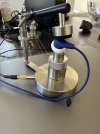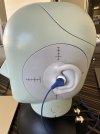Da cynics
Member
- Joined
- Jun 21, 2020
- Messages
- 82
- Likes
- 39
imaginary room is only needed for spinorama, not for the NFS measurement system itself. That is how I understand it.

 www.audiosciencereview.com
www.audiosciencereview.com

Understanding How the Klippel NFS Works
maybe this can set to lower value ? here are waterfall with 0.5 0.2 and 0.1 ms. 0.15 ms (as stereophile use)is not possible in REW. but 0.2 ms look good too. I use for all screenshots 100 segments so you can count the segment lines at 7 khz until it reach 65 db. at 0.5 ms rise time i ccount more...
 www.audiosciencereview.com
www.audiosciencereview.com


